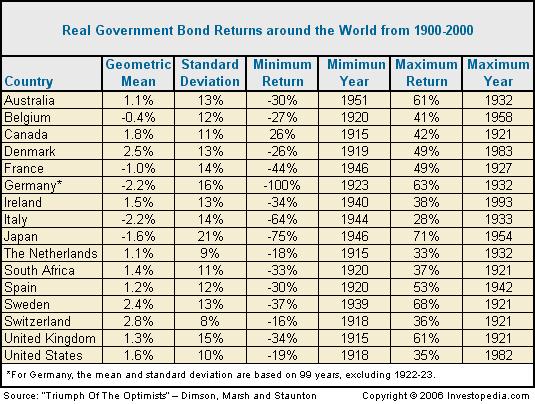This exchange about what constitutes the midwest is sort of humorous, given that funds invest based on economics, not political lines. The midwest is whatever the fund says it is, no more, no less.
M&P doesn't even say it focuses on the midwest. It says "
some emphasis is given to the ...
Upper Midwest, ... which
the Adviser "considers to be the states of Illinois, Iowa, Minnesota, North Dakota, South Dakota and Wisconsin". Not even Indiana. As always, read the fine, um,
prospectus.
As far as the
Census Bureau's definition of regions goes (which seems to be what some people here are alluding to), this is the same definition that calls Maryland a southern state. That's not what I was taught in school (i.e. that DC was situated between the northern states and the southern states), nor does it match what most people think, according to a (not too scientific)
538 poll. Only 6% of self-identified Southerners agreed that MD is part of the south.
Regarding the performance of MAPOX: What explains the difference in decades long performance (relative to respective categories) between MAPOX and MPGFX? Keep in mind that these funds were ostensibly managed by the same people. Were they keeping their best equity ideas for the balanced fund (that doesn't seem likely, but I haven't researched), or was the relatively better performance of MAPOX due to its bond sleeve?
Assuming the latter (IMHO a good assumption until justifiably questioned), it's fair to look to that bond portfolio. There are two issues here: (1) how regional is this part of the portfolio really, and (2) how has the fund performed in different bond markets.
To the first question: while MAPOX is currently heavily into corporates, that waxes and wanes. M* writes: " On the fixed-income side, the managers own a mix of U.S. government agency debentures and investment-grade corporate bonds. The allocation has varied over time." In 2006 (per annual report)
59% of its bonds were US bonds (mostly Fannie Mae), not regional. Even today (
semi-annual report released this week), with 90% of its debt in corporates, there doesn't seem to be a disproportionate amount in the states named by the fund.
Sure, lots of FoMoCo debt (about 1.4% of the corporates). But 40% of the corporate debt is in financials, and you'd be hard pressed to find a M&P regional company there. Okay, there's Kemper (Ill.) with a tad under 1% of the corporates. Berkshire Hathaway hails from Nebraska, not part of the fund's regional focus. Then you have more financials listed under industrials, like GE Capital (also sold recently), and Dun and Bradstreet (NJ). Big IT creditors include Intel (bigger than FoMoCo), Symantec, Autodesk, Fidelity Nat. Info Services (Fla.) and Western Union, all about 0.8% of corporate debt. Then there's midwest Motorola, with about 0.6%.
To the second question - how did the fund perform if we decompose by bond market? Using 1/1/80 as a starting point for the bond bull (rounding to decades), MAPOX
underperformed DODBX by 13% cumulative. Perhaps with the expected return of a bond bear market, MAPOX will once again outperform. Maybe not, since those pre-1980 managers are long gone. As Dan Fuss notes, he's one of the few bond managers around who's had experience in rising interest rate markets.
In short, it doesn't appear that M&P gets any particular benefit on the equity side from its
narrow (6 state) regional bias. On the bond side, it's hard to see that there even is a regional bias. Regardless, it hasn't outperformed your reference fund of choice since the 70s, when the bond market was very different. None of this detracts from M&P; it just doesn't support the theory that M&P (like Ford) has a better idea.
